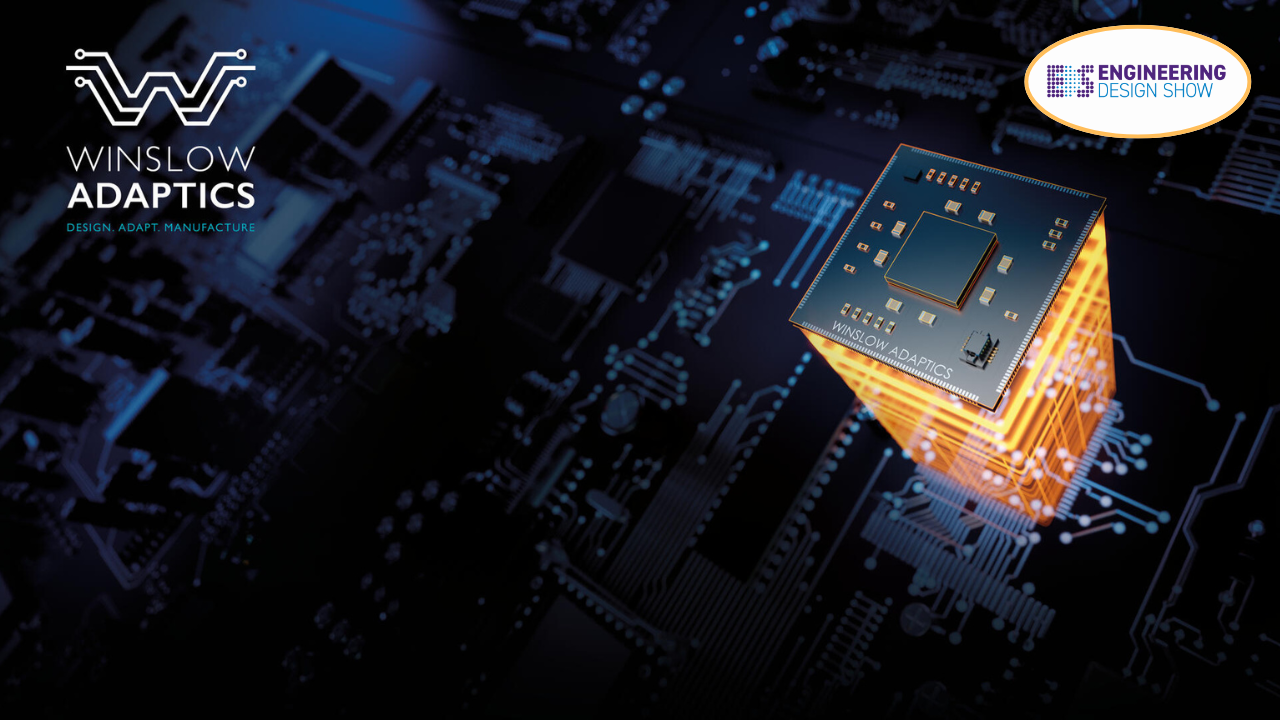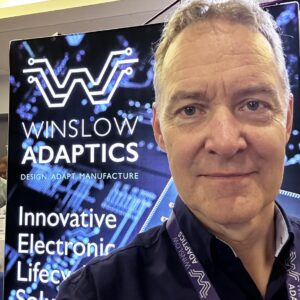Engineers juggling legacy platforms, incremental device refreshes and demanding manufacturing schedules know how quickly an unavailable component or form factor change can stall a build. Winslow Adaptics’ EDS message is simple: take those problems to the Winslow Obsolescence Surgery.
Rather than betting everything on last-time buys, Winslow Adaptics frames obsolescence as a solvable engineering translation between what the original BOM expects and what today’s supply landscape can yield. The approach centres on solutions built around adapter technologies that preserve circuit behaviour at pin and board level while flexing to new variables such as package type, voltage or signal conditioning.
Winslow Adaptics’ business development manager, John Dyson, said: “At EDS we’re presenting ourselves as doctors, prescribing solutions for obsolescence pains. Sick and missing semiconductors? We have the prescription for that. Consider it an Obsolescence Surgery which the stand will bring to life.”
Market uncertainty driving obsolescence
John’s read of the wider landscape is that economic uncertainty begets obsolescence. Reduced orders today become tomorrow’s availability headaches as buffers evaporate, capacity tightens and delayed programmes find the market has moved on without them. John expects that pattern to intensify and wants engineers to plan accordingly, not panic-buy.
For many organisations, the default response is the last-time-buy which John argues is not always the right choice. Manufacturing teams can struggle to align on last-time-buy quantities while marketing, engineering and finance all pull in different directions, only to discover later that volumes and timings were off.
John said: “The benefit of our solutions is you’re not tied into a certain quantity. If your particular market is booming, you can increase quantities. If it is dipping, slow it down. It’s a simple, flexible solution.”
That flexibility exists because Winslow’s replacements are engineered to behave indistinguishably from the original device in the system context. Quantities can ramp with demand without revisiting core design intent, qualification scope or downstream assembly constraints.
The solution begins with an engineer-to-engineer conversation to establish the nature of the missing device, then technically mapping viable alternatives that exist today. Typically, the alternative is ‘nearly’ compatible but might differ in package, I/O, voltage or timing. Winslow’s job is to close this gap.
The adaptation is physical and electrical. Mechanically, the adapter resolves footprint, height, and keep-out constraints while respecting the product’s environmental considerations such as vibration, temperature, life cycle, thermal paths and adjacent components. Electrically, Winslow may introduce passive components to smooth signals or accommodate voltage differences so the module behaves as the original circuitry expects.
John emphasised: “Not nearly the same, exactly the same.”
A recent FPGA replacement project was driven by the customer’s inability to purchase the device in its original package. Winslow brokered a peer-to-peer dialogue across mechanical and electronic disciplines to agree constraints, then manufactured a drop-in replacement defined at the BoM level: one product out, one product in and the system carries on.
How translation works in practice
A quick glance at a Winslow adapter belies the actual technology within, with some comprising 14 plus layers. The design leverages component minimisation trends. Replacing larger legacy components with smaller modern silicon leaves ‘border real estate’ around the device where Winslow can place tiny SMT components to achieve the required electrical behaviour.
If space is especially constrained, Winslow treats the customer’s PCB as a three-dimensional object. Engineers study clearances above and to the sides, evaluating millimetre vertical lifts and overhangs provided the operating environment allows.
As John explained: “Although the adapter design tools follow industry standards, Winslow’s proprietary input is decades of accumulated know-how in designing, manufacturing and qualifying adapters for tough environments.”
What visitors will find on the stand
Although Winslow is keeping the exact design of the stand under wraps until the show opens, John said: “We will be presenting genuine case studies, so visitors can pick the adapters up, inspect them and understand exactly how they work. You need to get hands-on to appreciate this three-dimensional engineering.”
The stand team will include John and CEO, Teri-Ann Winslow, who will be ready and waiting to discuss the practicalities of qualifying, scheduling and assembling replacements into existing builds without losing time to redesign.
From footprint converters to integrated solutions
EDS will also be an opportunity for Winslow to explain the difference between its standard off-the-shelf footprint converters and full electromechanical adapters. The former are stocked by distribution partners worldwide and address straightforward footprint changes without non-recurring engineering.
On the other hand, adapters are engineered, multilayer, often component-bearing assemblies that reconcile both physical and electrical differences to keep function identical under real operating conditions. The stand will present both, with the team helping visitors triage which path fits their component problem.
Beyond adapters, Winslow will be using EDS to introduce visitors to its wider capability set which includes designing and manufacturing test fixtures. The company also undertakes reverse engineering projects, typically for MRO requirements in sectors where long service lives demand reliable flows of critical parts. The common thread is pragmatic problem-solving around components and assemblies that keep larger systems supportable.
The company’s stance aligns with responsible design culture. Avoiding unnecessary redesigns preserves validated performance, reduces wasted effort and supports service life extensions that many sectors—especially regulated ones—depend on. In short, it is a resource-efficient way to keep fleets running and products available while the supply base shifts.
Getting the most from visiting EDS
Describe the product in question, candidate alternatives and the working environment the assembly experiences: vibration, temperature, expected life cycle and constraints on height or overhang. The more detailed the brief, the faster Winslow can translate it into a drop in solution.
If the requirement is less demanding, such as a footprint change without electrical adaptation, ask about off-the-shelf converters and where to source them through distribution. If the requirements are more complex, Winslow partners with other suppliers to ensure projects are always moving forward.
To reiterate, if companies are wrestling with the almost impossible task of accurately calculating last-time-buy quantities, explore the flexibility offered by a validated adapter solution that scales as the market moves. That way, manufacturers preserve options, avoid costly inventory mistakes and safeguard schedules against swings in availability.
Winslow’s Obsolescence Surgery exists to make things better.


